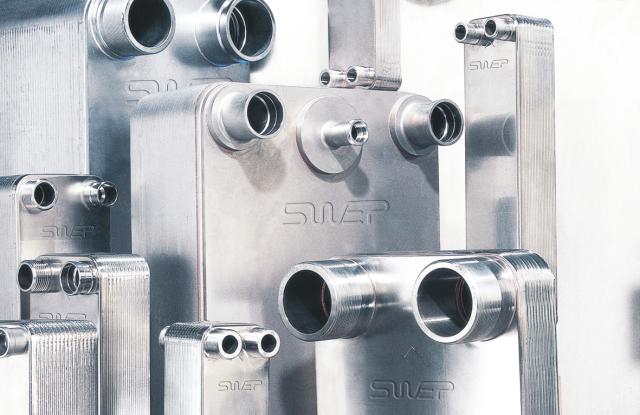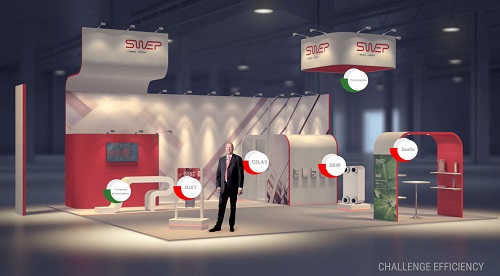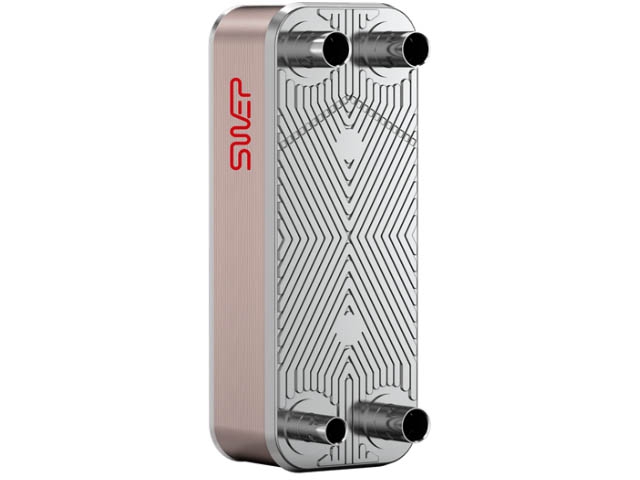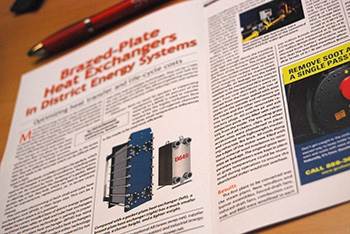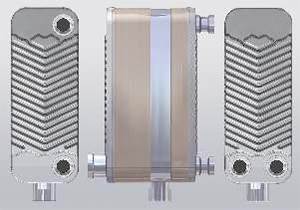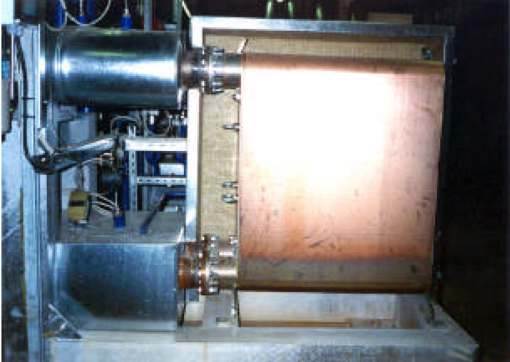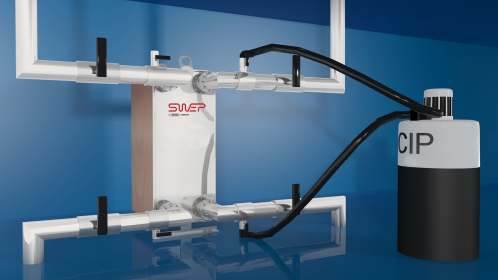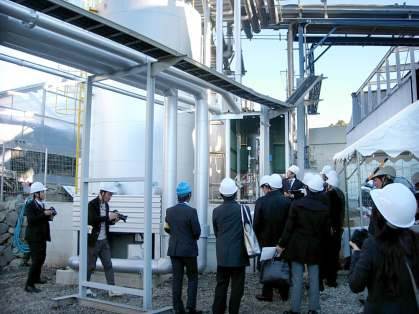- Contact 0870 350 7767
- |
- Advertise
BPHEs in wind power stations
 News and PR from SWEP UK Representation by Dover Intercompany Services UK Ltd - Published 07 December 2015
Wind power is one of the most cost-effective and rapidly growing renewable energy technologies available.
News and PR from SWEP UK Representation by Dover Intercompany Services UK Ltd - Published 07 December 2015
Wind power is one of the most cost-effective and rapidly growing renewable energy technologies available.There is an ideal application for SWEPÂs rugged and efficient BPHEs in every windmill: not directly in the production of electricity, but for cooling the vital oil that lubricates the mechanical power transmission and control systems.
The problem
A gearbox at the top of the windmill controls the velocity of the rotor and transmits mechanical power. The transmission oil that lubricates the gears gets hot, and must be cooled to maintain its performance and protect the gearbox. In a single-circuit solution, the oil is cooled by being pumped through a large air coil. However, this requires a large, expensive pump and air coil, and is neither efficient nor convenient, particularly when windmills are typically located in exposed and/or remote positions.
The solution
Cooling performance can be improved cost-effectively and within a smaller envelope by using a SWEP BPHE (e.g. a B57). The BPHE solution replaces the single large oil circuit with two smaller circuits, one for oil and one for ethylene glycol, with several advantages.
Heat transfer generally is improved because of the highly turbulent flow through each BPHE. Furthermore, the pumps and the air coil required for the two-circuit solution are smaller and less expensive to buy and run.
This is because ethylene glycol has better heat transfer properties than lubricating oil, and this system requires less ethylene glycol to flow through the air coil.
System description
During operation, the temperature of the transmission oil increases, and must be reduced to maintain proper lubrication of the gearbox. The oil is pumped through the BPHE where it is cooled by a glycol/water solution.
The glycol/water solution is cooled in turn by passing it through a relatively small coil fitted with flanges that present a large area to the air for cooling.
Benefits
In this solution, SWEP BPHEs offer:
High efficiency even at low flow rates
Savings on buying and operating pumps and air coils
Ruggedness and simplicity for minimal maintenance
Compactness for lower overall space requirements
Other announcements from SWEP UK Representation by Dover Intercompany Services UK Ltd
-
-
SWEP's continuity of supply protects your logistics and customers
Although social distancing keeps people safe, what challenges does it present to international logistics where efficiency is crucial?
04 Feb 2021
-
Take a tour of SWEPs Virtual Showroom
In this virtual stand, we have gathered some of the solutions that we offer within District Energy.
04 Feb 2021
-
Carbon footprint reduction on track
SWEP is working to reduce carbon emissions every day to move us towards a committed goal of becoming carbon neutral by latest 2030.
04 Feb 2021
-
Coping with Covid-19: SWEP employees find the positives amid the uncertainty
Due to the global pandemic, our employees had to learn to cope with the 'new' normal that it brought about, including a much more virtual working climate.
04 Feb 2021
-
The BX4T is SWEP's compact, flexible answer for the next generation of economize
The BX4T model is the latest evolution of our B4 sized range for the refrigeration market, boasting an even more compact design than existing economizers targeting VRF, Heat Pumps & Condensing Units.
04 Feb 2021
-
The NEW B4T ultra pressure model targeting C02 refrigerant applications
SWEP's new B4T-U (Ultra Pressure) model has been developed for applications in refrigeration targeting CO2 as the preferred natural refrigerant choice...
04 Feb 2021
-
Take advantage of SWEP's individual packaging option
SWEP provides customers with the option to have BPHEs (brazed plate heat exchangers), insulation, and any other accessories individually packed at their request.
11 Oct 2016
-
Brazed plate heat exchangers featured in HPAC Engineering
SWEP recently had a technical article published in a well-respected magazine whose readership includes many members within the District Energy industry.
11 Oct 2016
-
Cooperation furthers innovative brazing solutions
What happens when two companies decide to work together and share findings and innovations? SWEP and Höganäs know: New and improved products that can benefit all kinds of industries!
11 Oct 2016
-
SWEP introduces first AHRI Certified® Brazed Plate Heat Exchangers
SWEP is the first company to provide Brazed Plate Heat Exchangers certified by the Air-Conditioning, Heating, and Refrigeration Institute (AHRI).
04 May 2016
-
-
SWEP attends ATMOSphere Asia in Tokyo
SWEP will attend this years edition of ATMOSphere ASIA, an event covering all our product segments with the focus on HVAC+R.
04 May 2016
-
Aircel air dryers show their full potential with ADWIS
With 100,000 units sold at the beginning of 2015, SWEP's range ADWIS (Air Dryer With Integrated Separator) is now quickly becoming the market standard within several industrial applications.
07 Dec 2015
-
BPHEs in district heating systems
The city of Hoyerswerda, in eastern Germany, decided to modernize the city's district heating system.
07 Dec 2015
-
Turkey promotes a more sustainable society
Turkey is currently experiencing an increase in population combined with an urbanization rate that has risen rapidly, from 53% in 1990 to 75% in 2008.
20 Oct 2015
-
Clean or untreated water? A BPHE works with both
Industries around the world have to face the challenge of water contamination due to insufficient filtration.
20 Oct 2015
-
Clean power when ORC system recovers waste heat
An affordable and sustainable supply of energy is the key to modern society as well as global economy.
20 Oct 2015
-
SWEP - High efficiency and complete range of BPHEs for Chillers
At the AHR exhibition, SWEP launches a new and complete high efficiency product range for chiller applications.
03 Feb 2015





